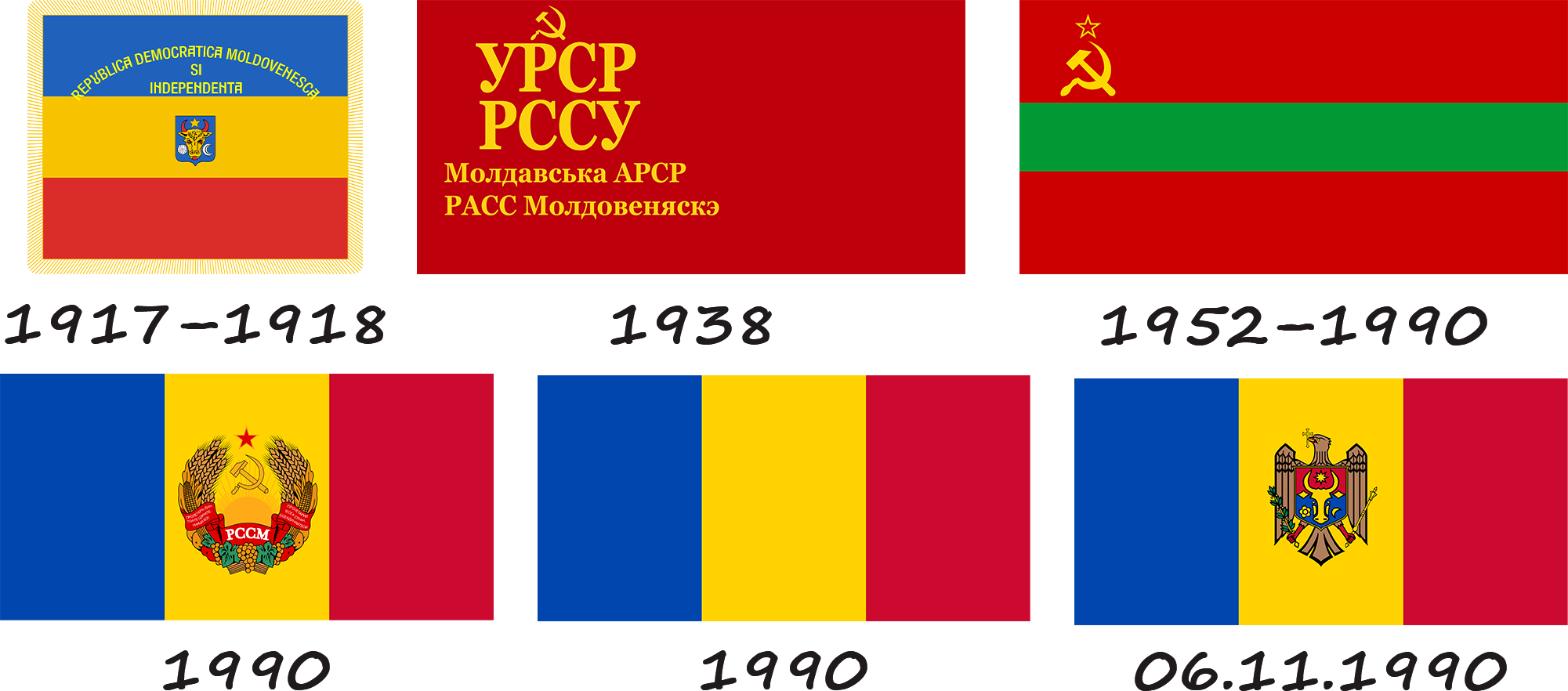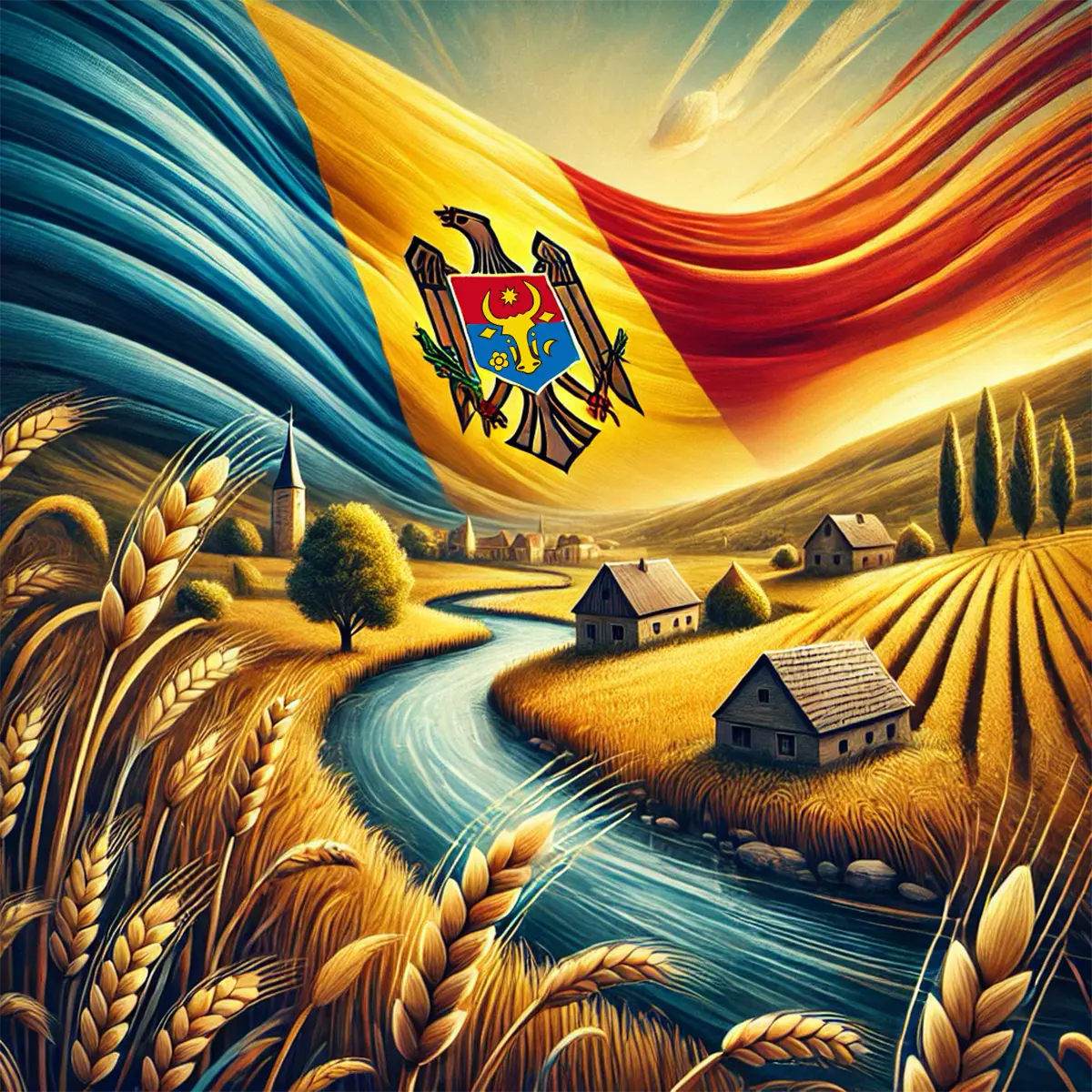In the late 1980s, the Moldavian SSR needed to adopt a national flag and symbols for the newly independent state. The existing coat of arms and flag of the Ukrainian SSR did not reflect the national history and character of the Moldovan people, as they were united by all-Soviet symbols. Traditional Moldovan symbols (the tricolor and the medieval coat of arms) were used at national gatherings, but they did not have official status. In October 1989, a commission was set up to "study national and state symbols" and proposed a competition for a new flag and symbols. In its resolution, the People's Front of Moldova supported the idea of national symbols, noting that until 1940 Moldovans used blue, yellow, and red colors to reflect their national identity. At the First Session of the Supreme Soviet of the RSFSR, the tricolor flag with the coat of arms was officially legalized. According to the Constitution of Moldova, the flag has a vertical tricolor stripe with the coat of arms in the center.
On April 27, 1990, Gheorghe Ghimpu, a member of parliament, raised the tricolor on the dome of the Moldovan parliament, which was the first time the national flag of Moldova was raised. However, the country's coat of arms was approved later. Until November 3, 1990, Moldova did not have an official coat of arms and used a tricolor without a coat of arms. In the spring of 1990, the Supreme Soviet of the MSSR announced a competition to create a new state coat of arms. 130 works by 100 artists were submitted. The development of the coat of arms was a complicated process, as there were not enough specialists in the field of heraldry in Moldova, and many artists did not have sufficient knowledge of the history of Moldovan heraldry. In April 1990, two versions of the coat of arms were presented: one by the master Gheorghe Vrabie and the other by a team led by Simion Odainici.

The version of the Moldovan coat of arms, according to Gheorghe Vrabie, depicts a bull's head with a crescent moon, a rose, a star, a sword, a mace, and a crown on the bird's chest. On the bird's wings are symbols of the sun and moon. The shield contains three inscriptions: RSSM, Moldova, Virtus Moldaviae rediviva, Dacia romana. Semen Odainici's group proposed a different version of the coat of arms with a bull's head, a star between horns, a sun and a crescent moon on a red and blue bisected shield, supported by an oak wreath and a wreath of three ears of wheat. The Moldovan coat of arms has always had the basic elements: a bull's head, the sun, a rose, and a crescent moon. These elements represent power, light, faith, and rebirth. The main elements of the coat of arms come from the "Legend of the Purification of Moldova" and have a connection with the history of Moldova and its symbols.
The Parliament of the Republic of Moldova adopted the new coat of arms of the country - a project by Gheorghe Vrabie and Maria Dogaru - on November 3, 1990. This version of the coat of arms was chosen after the rejection of the previously proposed versions by Gheorghe Vrabie and the team of S. Odainici.
Gheorghe Vrabie's design was modified under the guidance of Maria Dogaru, who was an expert in Romanian heraldry and history. The coat of arms became less stylized and full of symbols. The project of Gheorghe Vrabie and Maria Dogaru caused a debate in the parliament because of the similarity with the Romanian coat of arms, but eventually the coat of arms was accepted by the society.
According to the Constitution of the Republic of Moldova, the country's coat of arms consists of a horizontally divided shield with red at the top and blue at the bottom. The shield is crowned with a bull's head, in which there is an eight-rayed star, and a rose on the right, a crescent on the left, all elements are depicted in gold. The shield is located on the chest of an eagle holding a cross of golden color in its beak. The right claw of the eagle holds a green olive branch, and the left claw holds a golden scepter.
Maestro Gheorghe Vrabie died on March 31, 2016. His work was recognized by the Order of the Republic, which he was awarded in 2010, as well as by the gratitude of the people of the Republic of Moldova, whose symbol Gheorghe Vrabie's work became.






